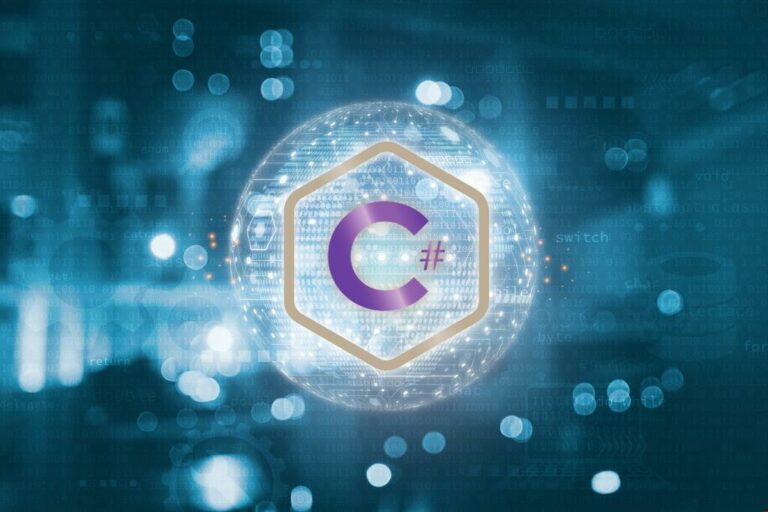Content
- A Backlog grooming meeting is just like the first part of the Sprint Planning Meeting.
- Development Team Techniques
- Top 5 Ways to Earn Scrum Education Units (SEUs)
- Why does Product Backlog Refinement Matter?
- Ideas on How to Improve Your Product Backlog Management Techniques
- You are reading a preview.
- How do You Prioritize a Product Backlog?
Detailed Appropriately — Upcoming, high-priority backlog items should have more detail than distant, low-priority items. This prevents waste that results from spending too much time breaking down backlog items that are irrelevant to an upcoming sprint. It also ensures the development team has all the detail they need to successfully complete the items in their next sprint.
Talking about Sizing and Forecasting in Scrum – InfoQ.com
Talking about Sizing and Forecasting in Scrum.
Posted: Thu, 04 Aug 2022 07:00:00 GMT [source]
Indifferent — These have no impact on customer satisfaction levels. For example, refactoring parts of your code so that it is easier to read and understand. There is no direct value to the customer, but it will make it easier for you to maintain in the future.
A Backlog grooming meeting is just like the first part of the Sprint Planning Meeting.
The process of grouping the remaining cards into the new list is repeated until the last card in the pile. A 20/20 vision of the order of the Product Backlog is created, which shows what is important to stakeholders. When all money is spent, the bought items in the list reflect the collectively important items to the stakeholders. Learn about Hansoft, the better backlog management tool. The first 20% of the Sprint should be for establishing the pace and to let everyone get some progress in. The last 20% of the Sprint could be the time when they’re focusing on the remaining items on the Burndown Chart.

This means that if you’re struggling or the team is having problems, one method to ease difficulty could be through backlog refinement. Refinement activities can take place before new development work starts or while it is being carried out, for instance, during the next sprint. You can find out more about the right time to groom you backlog in my post “When should Product Backlog Refinement Take Place? Don’t refine the backlog of the current sprint until it ends. You might feel tempted to only refine backlog items until the very last minute.
Development Team Techniques
You could use a dedicated tool to help you refine or estimate, such as Easy Agile TeamRhythm, or you could just rely on a spreadsheet or a whiteboard and pen. Furthermore, to estimate all such stories that have not been estimated. The cost of delay categorization, when compared against cost of implementation, will often give you a good idea of what should be done first. “If you are going to quantify one thing, quantify the cost of delay,” says lean thought leader Donald Reinertsen.

There is no recommended time length for a refinement session. Like I stated earlier, I shoot for an hour a week for the entire team. Remember, deep backlog the Product Owner should be tending to the backlog very frequently, so they should come prepared, making the meeting more effective.
Top 5 Ways to Earn Scrum Education Units (SEUs)
The best way to determine how often your team needs Product Backlog Refinements and how long the meetings should last is by gaining experience and making mistakes. After all Product Backlog items have been assigned, the developers inspect the assignments done by others. A new size will be assigned if they disagree with the current size of the item. Magic Estimation and Planning Poker are estimation practices based on relative sizing.
In the early days, Developers will likely need to dedicate a lot of time for refinement. As the Product Backlog takes shape, it will have fine grained items towards the top and more coarse-grained items towards the middle and bottom. At this point, Developers can dedicate less and less time to refinement. The amount of time will never go down to 0 but will likely settle around 10% to 15% to maintain the Product Backlog in this shape and regularly prep for the next Sprint. You are the Product Owner or the Scrum Master and you need to ensure that the Product Backlog Refinement session happens professionally.
If they do not understand an item, the question mark is assigned. A shared understanding of the work is established if the Scrum Team and stakeholders jointly discover insights. Hypothesis Canvas and UX Fishbowl are tools to facilitate this discovery. A good rule of thumb to follow for sizing is that no user story should be larger than half the duration of the sprint. Most should be between half a day to 3 days in a 2- week sprint.
Why does Product Backlog Refinement Matter?
A backlog contributes massively to the success of an agile project. It’s a living document, which means it changes over time. And there are no strict rules when it comes to refining a backlog. That means, for instance, that not every item requires detail. That’s usually a sign that refinement is lacking for that item.

If the item cannot be refined in 10 minutes, it usually means that either the item is too big and needs to be split, or, that you don’t have the right people in the room who are knowledgable about the item. Some people are critical of the use of the Definition of Ready. I don’t see it as much of an issue and if these types of things occur, they are easy to coach around.
Ideas on How to Improve Your Product Backlog Management Techniques
This type of preliminary work allows the development team to deal with the most important PBIs at an early stage and to ask questions that would otherwise only arise during Sprint Planning. This gives the PO the opportunity to find the answers in time for the Planning Meeting. The team can adjust the length and frequency of the meeting, or even cancel them altogether, depending on what’s necessary at the moment.
A product backlog Item or user story is progressively elaborated on as it moves up the product backlog. Avoid the trap of discussing and refining an item only once. Instead, refine it just-in-time again and again as needed with more details as more is discovered.
- The focus is on what is needed and why, rather than on how to solve the business need.
- The scope and goals should be clear and concise- everyone should be on the same platform.
- Follow patterns for Spitting User stories to help you get better at this.
- For each item they decide to bring forward during refinement they need to have a clear idea of what they would like to achieve for this item.
- But it’s common practice to hold meetings with relevant stakeholders on a regular cadence .
The Kano model is tremendously useful in organizations that tend to only do Must-Be features. But, to succeed in the marketplace, you also need to deliver attractive and one-dimensional features. So, when time comes to prioritize what goes into a release, it’s a good practice to pick one from each of the important categories above.
So you see, these were some of the Backlog Refinement techniques or tips that you can apply in the product backlog and make enable the whole agile team to perform well at their end. So, read this topic now and know all about product backlog refinement, its https://globalcloudteam.com/ tools, and techniques. And don’t forget to stay home, stay safe, and never stop learning. In any team, the product owner comes with a list of backlog items that need to be prioritized. So below mentioned are the tasks during the backlog refinement.
You are reading a preview.
Product Backlog Refinement is a key activity in Scrum that is often overlooked. Have every team member prepare their own list of requirements in one minute. Estimated- is important for understanding the cost implications on story points and ideas. This is another Product Backlog Refinement best practice. Since the purpose is to make the session interesting and interactive, choose to keep the duration of the meeting to less than an hour. Also, if it is a meeting that takes typically about 1 hour, go in for a weekly session.
When Scrum Teams are asked to guess product needs, customer behavior, and product-market fit, they are often doomed to fail. Organizations can change this by empowering Scrum Teams as problem-solving teams, not feature delivery factories. Product backlog refinement is a key activity in Scrum that is often overlooked. Talk about the User Stories again and how to prioritize them.
Techniques at Portfolio and Product Roadmap Level
More mature teams may find it more effective to refine backlog items during sprint planning. Or they may treat refinement as a continuous flow and leave refinement of the backlog items until mid-sprint when they are ready to develop the backlog item. In practice, this means that most Scrum Teams plan three time slots of each one hour, throughout the sprint where they spend time with the Product Owner and stakeholders. This should be enough time for a Product Owner and Development Team to create a flow of items in a ready state.
It provides flexibility and allows teams to choose the frequency of, approach to, and techniques used in Product Backlog Refinement. Working with requirements is crucial for Agile software development, so teams often use Product Backlog Refinement to ensure that all parties understand what is expected of them. The purpose of refinement is to ensure that the continuity between user expectation and market feedback and project deliverance is always maintained.
The product owner ensures the product backlog is ordered properly while the developers ensure the product backlog Items are clearly understood and are properly sized to fit in a sprint. Avoid having a product owner or business analysts refine the product backlog items on their own and then hand things over to the rest of the team to build and develop. Always have various skill sets represented in the conversations from analysis, development, and testing, etc. to avoid misunderstandings and ensure everyone is on the same page in terms of the work ahead. There should be no major surprises in sprint planning as most items being planned should already be familiar to the team via the refinement activities. A product backlog contains in it all the items that are deemed important for the coming iteration to complete. A product backlog is something that contains in it, user, and enabler stories.
With an objective to enable continuous learning and progression for our learners, PremierAgile curated several learning articles. It also helps, if you are recording the results of your discussion in an online tool, to have one person entering information in the tool who is separate from the facilitator. And rotate both roles so that everyone on the team has a chance to experience it and will have empathy for those performing the role. In this article, we will show you exactly what Product Backlog Refinement means, what you should pay attention to and why refinement is so important. Agile Organization Agile Organization Journey Find out how to make your organization invincible and adopt agile enterprise processes.
